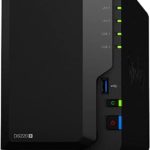A network bridge is a device that connects two different networks using the Ethernet protocol. It receives packets of data from one wired or wireless network and forwards them to the other network. The network bridges are used to connect networks of different types, for example, Ethernet to Wi-Fi, Wi-Fi to Ethernet, Ethernet to Bluetooth, etc.
A typical scenario where a Network Bridge would be deployed is when an organization has both wired and wireless infrastructure in its office space but wants users on both sides of the building connected together wirelessly through a single SSID/network name. In this case it would make sense for the access points (APs) at either end of the building to be configured as AP repeaters with a bridged connection between them.

The network bridge will begin to “listen” to the data transmission of devices on the two networks once it is installed. It accomplishes this by keeping a table of MAC addresses for automobiles, which it generates automatically and without being instructed to do so.
Table of Contents
WDS Bridge
Setting up a WDS Bridge will allow an AP to act as a repeater, sending the same network packets it receives on one interface out via another interface while bridging the connections together. This is extremely useful for extending network range where there might be some sort of obstacles in the signal path or providing better coverage inside buildings using an antenna with better gain pointing in a certain direction.
For example, suppose you are trying to connect two wireless networks that are quite far apart from each other but they are on relatively clear line-of-sight paths. You would not get good reception on both sides of the link due to obstructions or interference if you used just one wireless router or access point without setting up WDS bridging between them.
The challenge with this configuration is that the wireless side of the AP (the Sender) must have a special bridging license in order to be able to support WDS. In addition, when using more than 2 access points in a single location there may also be a problem with co-channel interference where two APs are trying to use exactly the same channel at the same time which can cause serious performance problems.
The solution here is to have each side configured for a different radio channel so they will not interfere with one another and cause congestion on your network. If you want a detailed explanation about how this works, check out our article on Co-Channel Interference .
The other way around it would look like this:
In this case, all of the wireless network would be managed from a single AP acting as a Wireless Network Controller (WNC). This would require that only one Ethernet port from each WDS Bridge is connected to the controller.
The LAN side of the bridge should also be configured in a different VLAN than what is being used for all other traffic on your network. Otherwise, there may be collisions between data packets going through the router and those going through the WDS interface which will cause major performance problems.
It is important to remember that setting up a WDS connection only works if every device on it has the same SSID/Ssid set. This means that both ends of your connection must either use access points or adapters with multiple radios that can be set to different channels.
Mesh Network
A mesh network is an architecture that allows for continuous connections throughout large geographic areas such as city blocks or across a campus. It uses nodes or base stations positioned in high locations with overlapping radio coverage provided by WDS bridges.
The concept of using routers at the target location to extend range was originally introduced by Ubiquiti Networks who manufactures some of the best known wireless equipment currently available on the market today under the trade name AirMax .
Mesh networks are basically Wireless Distribution System (WDS) links that are arranged into an ad hoc network topology over larger distances rather than only being used locally on one LAN segment between two access points which is what you would see when setting up bridge links for traditional Wireless Local Area Networking (WLAN) applications.
The concept of mesh networking is not new by any means but it has started to become more commonly implemented in larger commercial settings where greater amounts of bandwidth are needed for networking media-intensive wireless events.
It requires the use of specialized hardware that is capable of supporting WDS and routing packets across multiple hops while maintaining high throughput and low latencies.
The other challenge is making sure that at least one Internet connection reaches every node on your network if you want people to be able to communicate using data like voice and video while away from your secured internal network.





